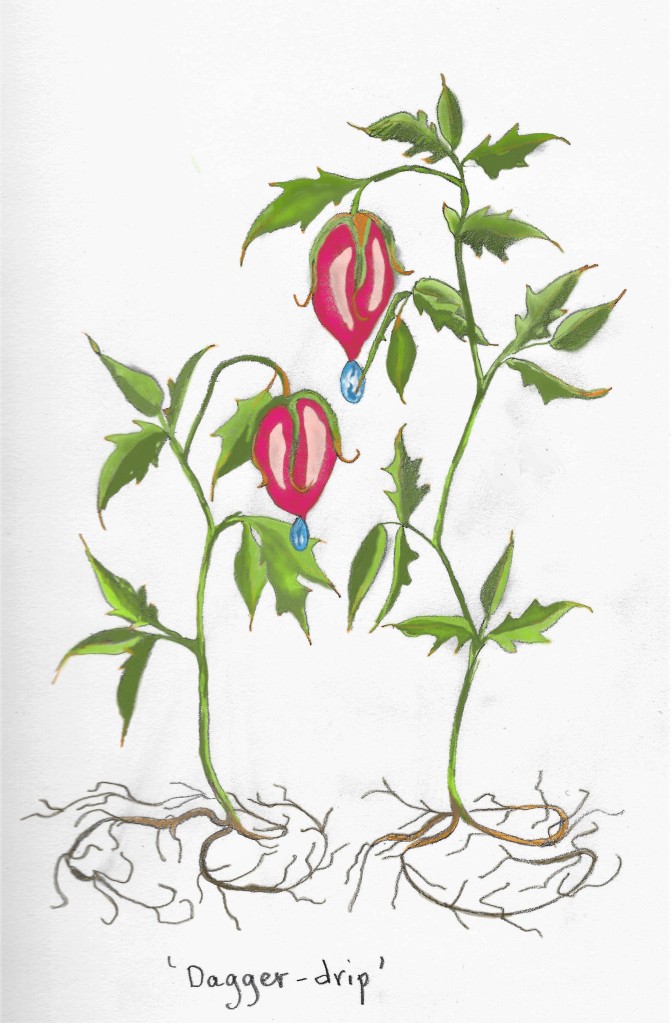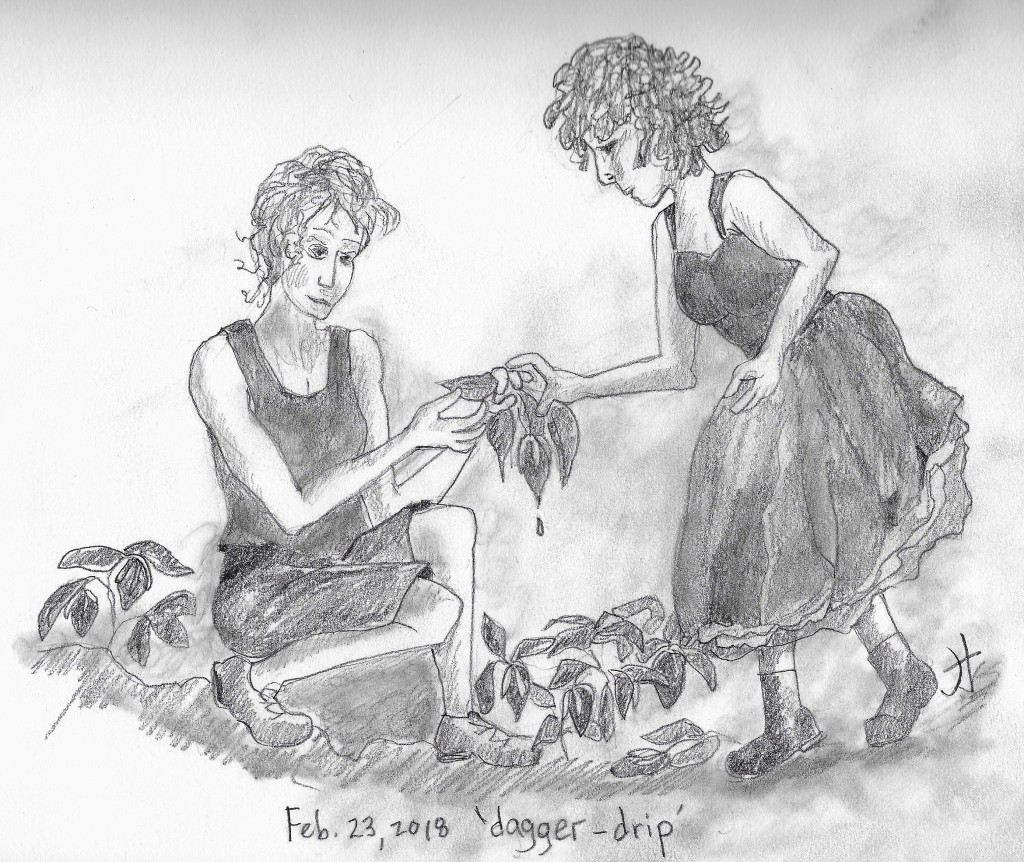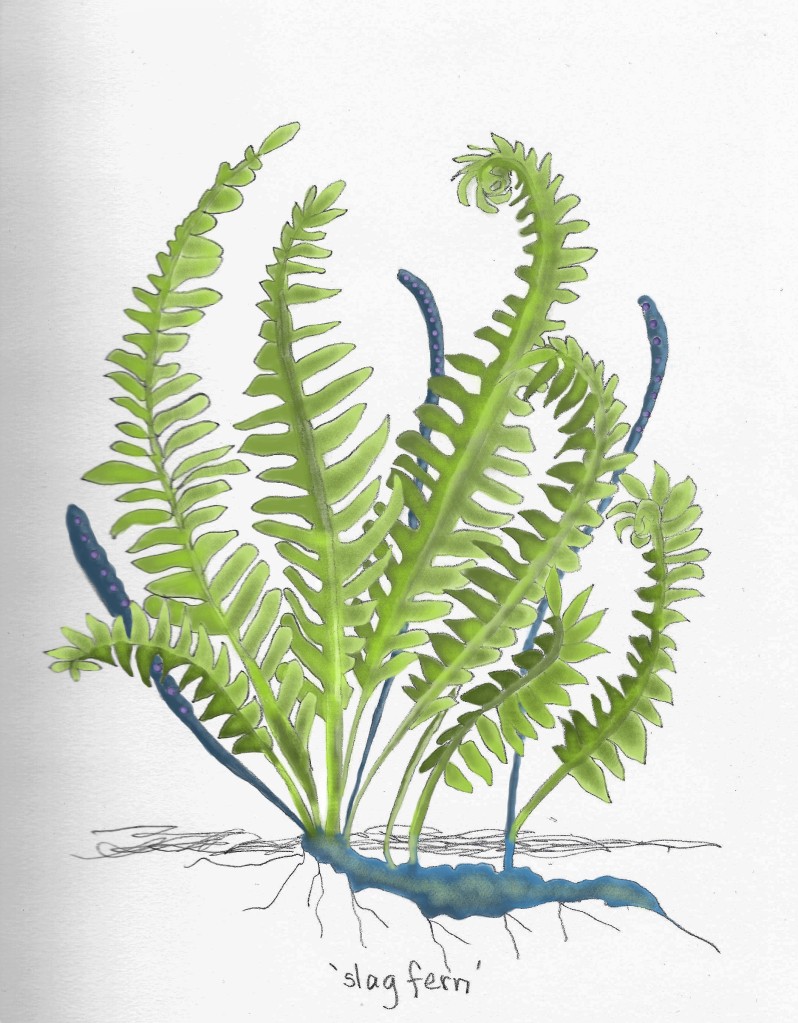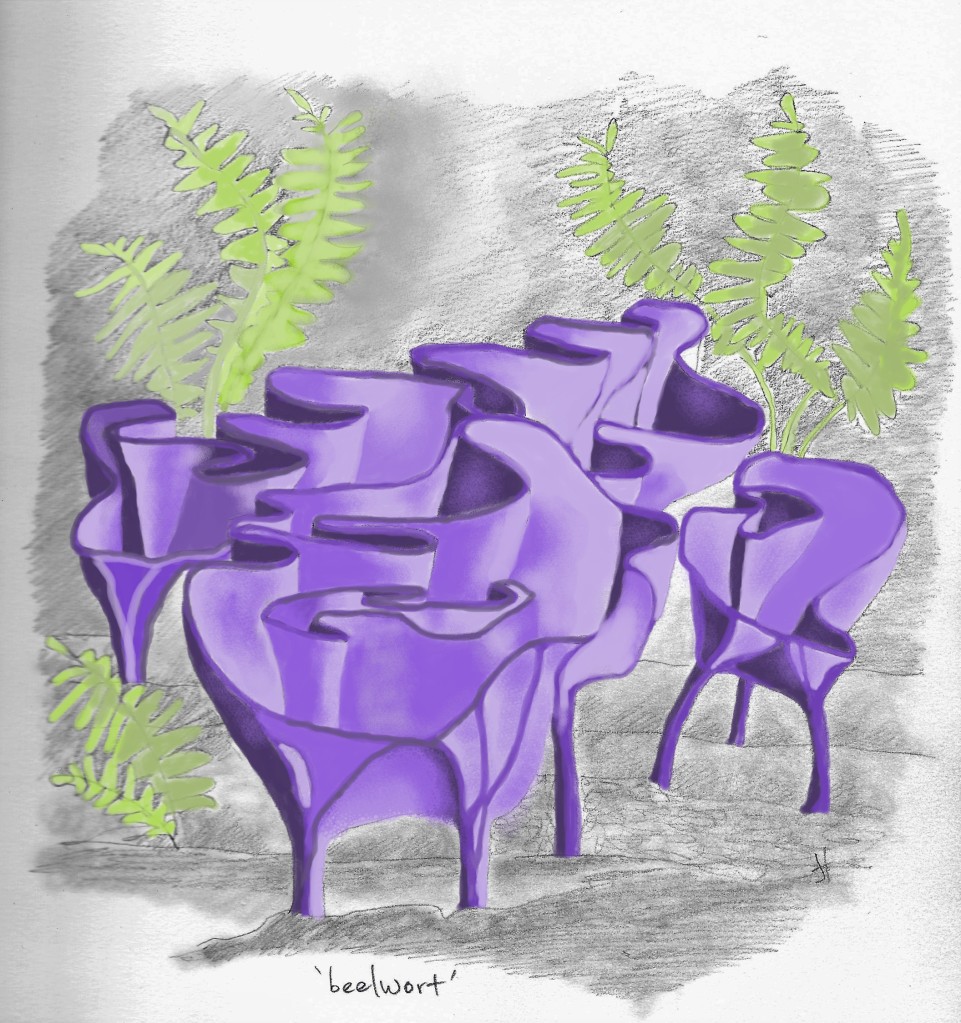I am a botanist, so when I write about the alien planet Meniscus, it is only logical that I should populate the planet with lots of plant-like species.
~

~
A few of my characters are also interested in the plant-life. Odymn, my parkour-loving protagonist, wants to be able to live off the land, so she samples a tiny bit of every plant she finds and has gathered a considerable list of edibles (do not do this at home!). Madoline, who loves to cook, is interested in the edibles as well, since she can put them in her delicious stews. She is also interested in poisonous plants since she hates the local aliens; by Book Five, she has a reputation as Nan’math Madoline (Madoline the Contaminator), poisoner of hundreds of Dock-winders and Gel-heads. Kathryn, an artist, is interested in plants because they are great subjects for her drawings.
~

~
As Kathryn drew more and more plants to illustrate the Meniscus books, I got the idea of creating a Flora of Meniscus. For the last few weeks, Kathryn and I have been drawing new plants, adding colour using GIMP (GNU Image Manipulation Program) and thinking about plants on other planets.
~

~
Are these classifiable as plants? Perhaps. Perhaps not. But to the Humans, the non-botanists of Themble Hill, they look and act like plants.
~
Why do ‘plants’ on Meniscus resemble plants on Earth? Since they do not know the local names for plants, the Humans name the plants they find by the names they know. So the slag-ferns look like ferns, but they may not be ‘ferns.’
~

~
The plants that populate Meniscus illustrate a principle in biology: ‘form follows function.’ Over and over again, living things solve problems in similar ways. So the slag-fern, needing to access sunlight for energy, maximizes leafy area, using a strategy common to ferns on Earth. The principles of parallel and convergent evolution are expressions of similar strategies (for an explanation of parallel and convergent evolution, see https://www2.palomar.edu/users/warmstrong/convevol.htm )
~
In creating a Flora of Meniscus, I have learned so much. First, I have realized that passing mention of a new plant by one of my characters can never hope to detail the morphology of the plant. As a writer, I need to have my characters pause and report the sights, smells and even sounds that characterize these plants. Secondly, publishing this Flora will mean I have to learn to work with colour in my publishing platform, KDP. And lastly, I know I can use the Flora as a method of keeping my descriptions consistent in future stories.
~
At the rate I am working, I think the Flora of Meniscus may be out by the end of this year!
~
~

I hope you enjoy these samples of a few of the coloured drawings.
~
All my best!
Notice the plants around you!
Alexandra (a.k.a. Jane)















